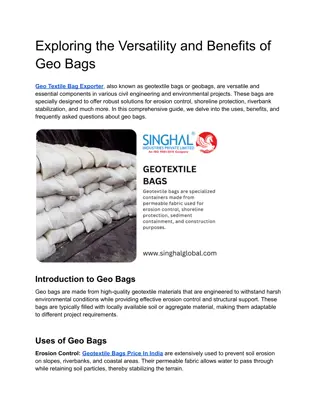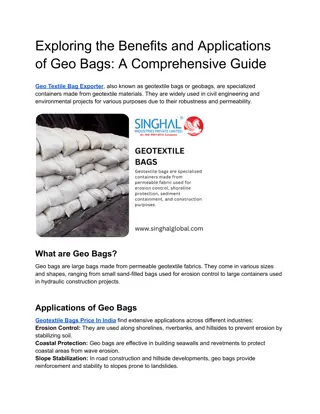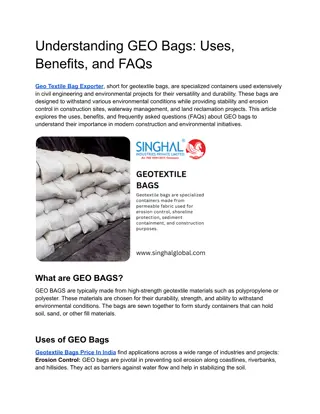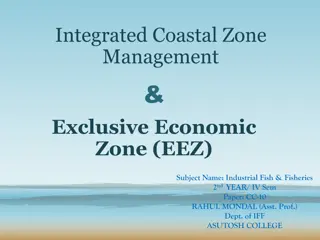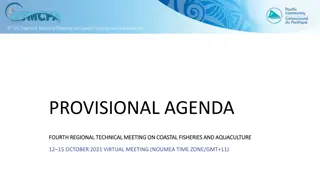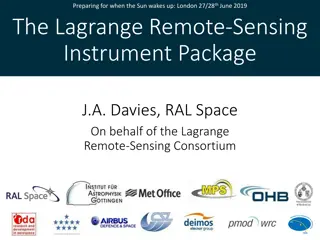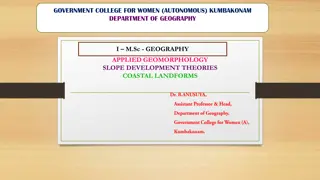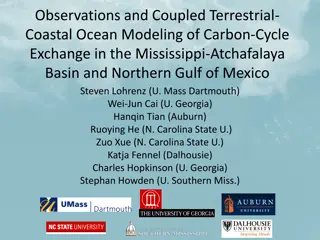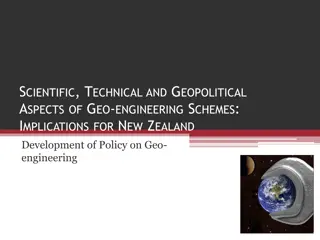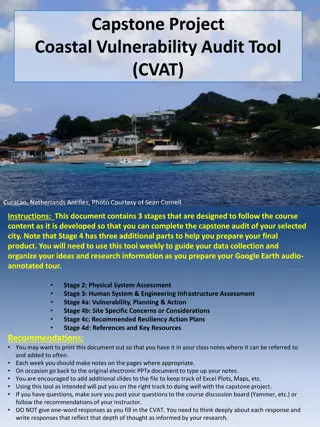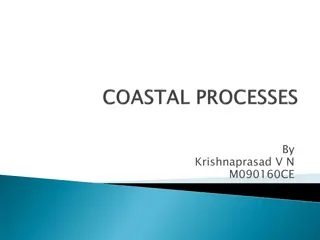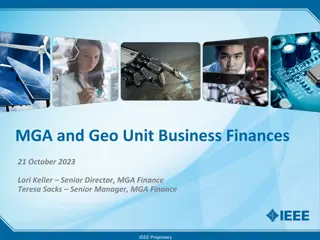- Geo-CAPE Coastal Ecosystem Dynamics Imager (CEDI) IRAD Repackaging Study
- The Geo-CAPE Coastal Ecosystem Dynamics Imager (CEDI) is undergoing a repackaging study to reduce its volume for compatibility with various missions. The study aims to define a scientifically viable mission by evaluating architecture and packaging trades. It compares the volume of the Geo-CEDI to other systems and considers parameters like optical packaging, gimbal size, PPS/jitter control, calibration schemes, and mirror scaling. The traditional elevation over azimuth gimbal type is the baseline, with considerations for flexure suspension and transmissive calibration with XY scanner. The ultimate goal is to minimize volume and cost while maintaining performance standards.
Download Presentation

Please find below an Image/Link to download the presentation.
The content on the website is provided AS IS for your information and personal use only. It may not be sold, licensed, or shared on other websites without obtaining consent from the author.If you encounter any issues during the download, it is possible that the publisher has removed the file from their server.
You are allowed to download the files provided on this website for personal or commercial use, subject to the condition that they are used lawfully. All files are the property of their respective owners.
The content on the website is provided AS IS for your information and personal use only. It may not be sold, licensed, or shared on other websites without obtaining consent from the author.
E N D
Presentation Transcript
Progress Report Geo-CAPE Coastal Ecosystem Dynamics Imager (CEDI) IRAD Repackaging Study Jason Budinoff / GSFC Cathy Marx / GSFC May 12, 2011
Coastal Ecosystem Dynamics Imager (CEDI) Block Diagram IDL Baseline Volume - 7.5 m3 Mass - 621.4 kg Power - 392 W Aperture Cover (closed during solar cal) Aperture Door Launch Lock Primary Mirror External Baffle Calibration Source Thru-hole Enclosure Scan Mirror Detectors HyVISI TCM8050A Custom 1K x 2K HyVISI TCM8050A Custom 1K x 2K SWIR Band Optical Bench MCT H2RG 2Kx2K Slit Star Trackers (3) (orthogonally mounted) SIRU Telescope Aft Optics Band 2(600-900 nm) Band 1 (345-600nm) 2
Aperture & Calibration Covers Opened I n t e g r a t e d D e s i g n C a p a b i l i t y / I n s t r u m e n t D e s i g n L a b o r a t o r y 2-Sided Diffuser plate Solar Calibration View Lunar Calibration & Nadir Science Views Scan mirror mechanism Use or disclosure of this data is subject to the restriction on the title page of this document GEO CAPE Study Week: 1/25 1/29/10 Presentation Delivered: Jan 29, 2010 Mechanical Systems, p Final
Why? Desire to reduce instrument volume to allow payload to be hosted on other missions Minimally acceptable scientifically viable mission .help to define this from the bottom up GEO-CEDI (IDL) at 7.5m2 too large to allow hosting on some platforms Study will evaluate architecture & packaging trades to reduce volume.
Volume Comparison GEO-MDI 15.3 cubic meters GEO-CEDI (IDL) 7.5 cubic meters GEO-CEDI (IRAD) 4 cubic meters?
Trade Space The merit function is lowest volume, then lowest cost. Several parameters will be traded: 1. Alternate optical packaging, Eff F/#, folding, etc. 2. Reduce gimbal size, alternate gimbal architectures 3. PPS / Jitter control implementation 4. Alternate calibration schemes 5. Primary Mirror scaling Some parameters will not be traded: 1. Instrument architecture (Offner Relay slit spectrograph) 2. Spectral range and channel count
Gimbal Traditional elevation over azimuth type is baseline Evaluate flexure suspension XY scanner; analogous to large, slow steering mirror Evaluate transmissive cal with XY scanner only Trade large air gap voice coils vs. limited angle torque actuators
Alternate Optical Packaging Faster telescope out of plane folding options to enable more space efficient packaging Additional fold optics required Additional optics (periscope/K mirror) may be required to maintain slit orientation after folding Current IDL layout shown
Out of Plane Layout Channel 2 HyViSi ROIC 600-1100 nm Channel 1 HyViSi ROIC 345 600 nm Channel 3 H2RG 1225-2160 nm Slit channel 1+2 Slit channel 3 120mm FSM in periscope
Calibration Double sided diffuser Specular calibration IDL concept has deployable calibration assembly, and required 3 mechanisms for 2 specular targets Transmissive calibration? Can we reduce number of calibrators? Diffuser Plate Select Mechanism Launch Lock Cover Mechanism
Precision Pointing System (PPS) Add the JHU/APL PPS which utilizes FSM+star tracker+inertial reference (gyro) system to increase S/N, cancel S/C and self jitter Coupled with scanning gimbal How do I get smaller by adding more components?
Future Work Complete mechanical sizing trade Add structural, thermal, optical bench detail GEO-MDI 15.3 cubic meters GEO-CEDI (IDL) 7.5 cubic meters Still have a way to go! GEO-CEDI (IRAD) <7.5 cubic meters





